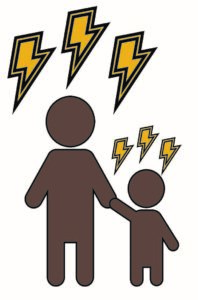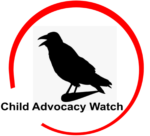From the Center on the Developing Child—Harvard University
 Years of scientific study have shown us that, when children’s stress response systems remain activated at high levels for long periods, it can have a significant wear-and-tear effect on their developing brains and other biological systems. This can have lifelong effects on learning, behavior, and both physical and mental health.
Years of scientific study have shown us that, when children’s stress response systems remain activated at high levels for long periods, it can have a significant wear-and-tear effect on their developing brains and other biological systems. This can have lifelong effects on learning, behavior, and both physical and mental health.
A growing body of evidence from both the biological and social sciences connects this concept of chronic wear and tear to racism. This research suggests that constant coping with systemic racism and everyday discrimination is a potent activator of the stress response. This may help us understand the early origins of racial disparities in chronic illness across the lifespan.
The evidence is overwhelming: Black, indigenous, and other people of color in the U.S. have, on average, more chronic health problems and shorter lifespans than whites at all income levels.
People of color receive unequal treatment when they engage in systems like health care and education, and also have less access to high-quality education and health services, economic opportunities, and pathways to wealth accumulation. All of these reflect ways in which the legacy of structural racism in the U.S. has created conditions that disproportionately undermine the health and development of children and families of color.
Multiple studies have documented how the stresses of everyday discrimination on parents or other caregivers, such as being associated with negative stereotypes, can have harmful effects on caregiving behaviors and adult mental health. And when caregivers’ mental health is affected, the challenges of coping with it can cause an excessive stress response in their children. But we can prevent lasting harm if we work together.
To address these challenges, we must not only provide needed services for all young children and families, but also create new strategies to address “upstream” inequities that systematically threaten the health and well-being of young children of color and the adults who care for them.
This means actively searching for and reducing unseen, restrictive biases in ourselves and in economic and social policies through initiatives such as fair hiring and lending practices, housing and home ownership programs, anti-bias training, and community policing initiatives.
It’s clear that science cannot address these challenges alone. But science-informed thinking combined with expertise in changing entrenched systems and the lived experiences of families raising young children under a wide variety of conditions can be a powerful catalyst of more effective strategies.
For sources and more information: <https://developingchild.harvard.edu/racism-and-ecd>
<https://harvardcenter.wpenginepowered.com/wp-content/uploads/2020/11/RacismInfographic_2020.pdf>

